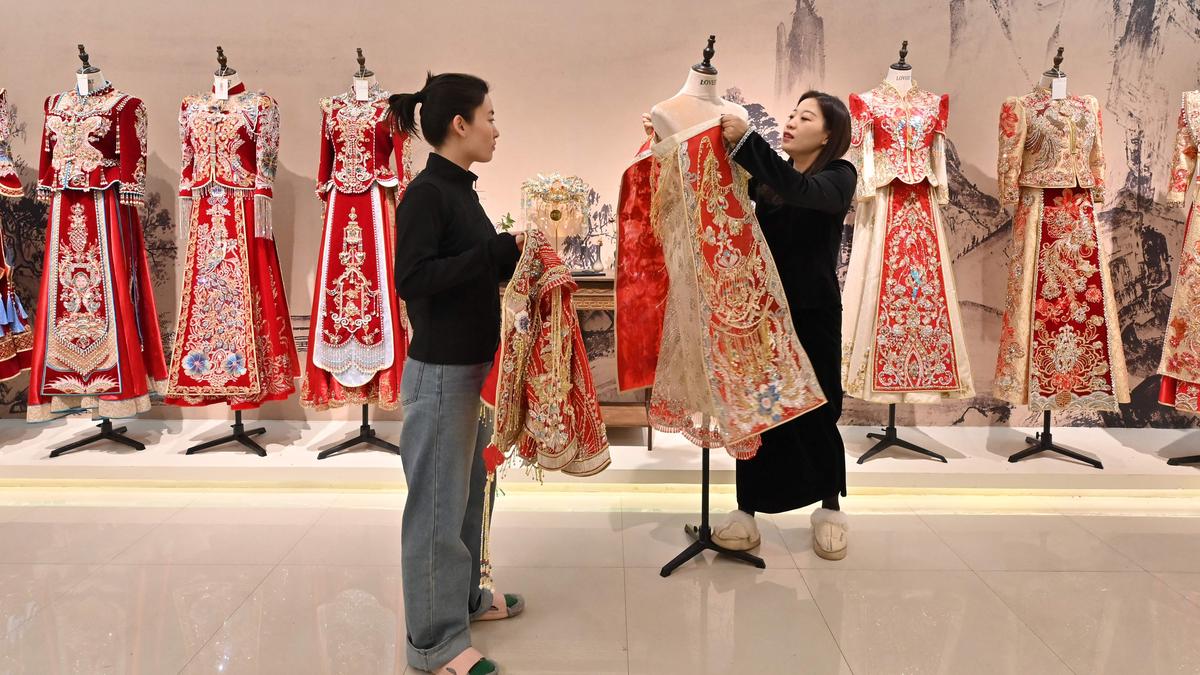
Why are marriages in China on the decline? | Explained Premium
The Hindu
Declining marriages and population in China pose economic and social challenges, with government policies failing to address root causes.
The story so far: There has been a major decline in the number of couples who are registering to marry in China. As per the Chinese Ministry of Civil Affairs, in 2024, across China, only 6.1 million couples registered, a drop of 20.3% compared to 2023 figures. This is the lowest number of registrations since 1986. As the general cost of living and urban unemployment has risen, with almost 44% of urban women not wanting to marry, marriages in China are declining.
While stand-alone this may not appear as a very pertinent challenge, coupled with the consistent decline in population, it gets compounded. China’s population has been declining consistently for the last three years and in 2022 the number of deaths exceeded birthrates. The primary reason for this is the one-child policy, introduced in the 1980s and implemented with great zeal. Chinese President Xi Jinping has tried to reverse the trend by introducing the two-child policy in 2016, which was later modified to a three-child policy in 2021. However, the policy shift has failed to have any major impact. Furthermore, the desire for a male child has led to an unbalanced sex-ratio as well.
The declining population has now become a demographic challenge for Mr. Xi. As a result of these policies, China has witnessed a steady decline in the number of working age people (19-59 years). People above 60 years make up 22% of the Chinese population today and maybe 50% by 2050. This has also intensified the pension pressure, as the Chinese Academy of Social Sciences (CASS) predicts that the pension fund may run out by 2035. In order to postpone such reality, the government has increased the retirement age from 60 to 63 for men and to 55 for women. This would be a temporary solution because if the gap continues to rise, it will provide only a limited respite. The falling birthrates have also increased the demand for care giving and healthcare, while a lot of kindergartens have been shutting down.
The reducing population and the challenges which this leads to directly impacts the economic future and stability of the Chinese government. Even though the government has been attempting to lure people with financial support, the cost of raising a child is proving an insurmountable deterrent to the people.
Rather than accepting the reality of the situation and its far-reaching impact, the Xi government is still attempting to resolve this with policies and diktats. Such an approach showcases that the government is still looking for ways to change ground realities with the help of top-down processes without acknowledging that these issues need to be accepted as social reality, and thus need people-centric solutions which echo with Chinese society today.
For example, while delivering a speech at the Women’s Federation of China, Mr. Xi called on the women to, “actively cultivate a new culture of marriage and childbearing and strengthen guidance on young people’s view on marriage, childbirth and family”. This statement underscores the gap between the Communist Party of China (CPC) and society in China today. The CPC has a long history of interfering in the lives of Chinese women, with the most prominent example being the one-child policy. The CPC under Mr. Xi is still looking at ways to control and command society. It strongly believes that the people should undertake tasks which are commanded by the party with the premise that it knows what is best for the nation. These policies seem to be directed towards safeguarding the power of the party, and not to the needs of the larger society.
Gunjan Singh is Associate Professor at OP Jindal Global University.













